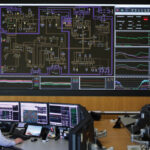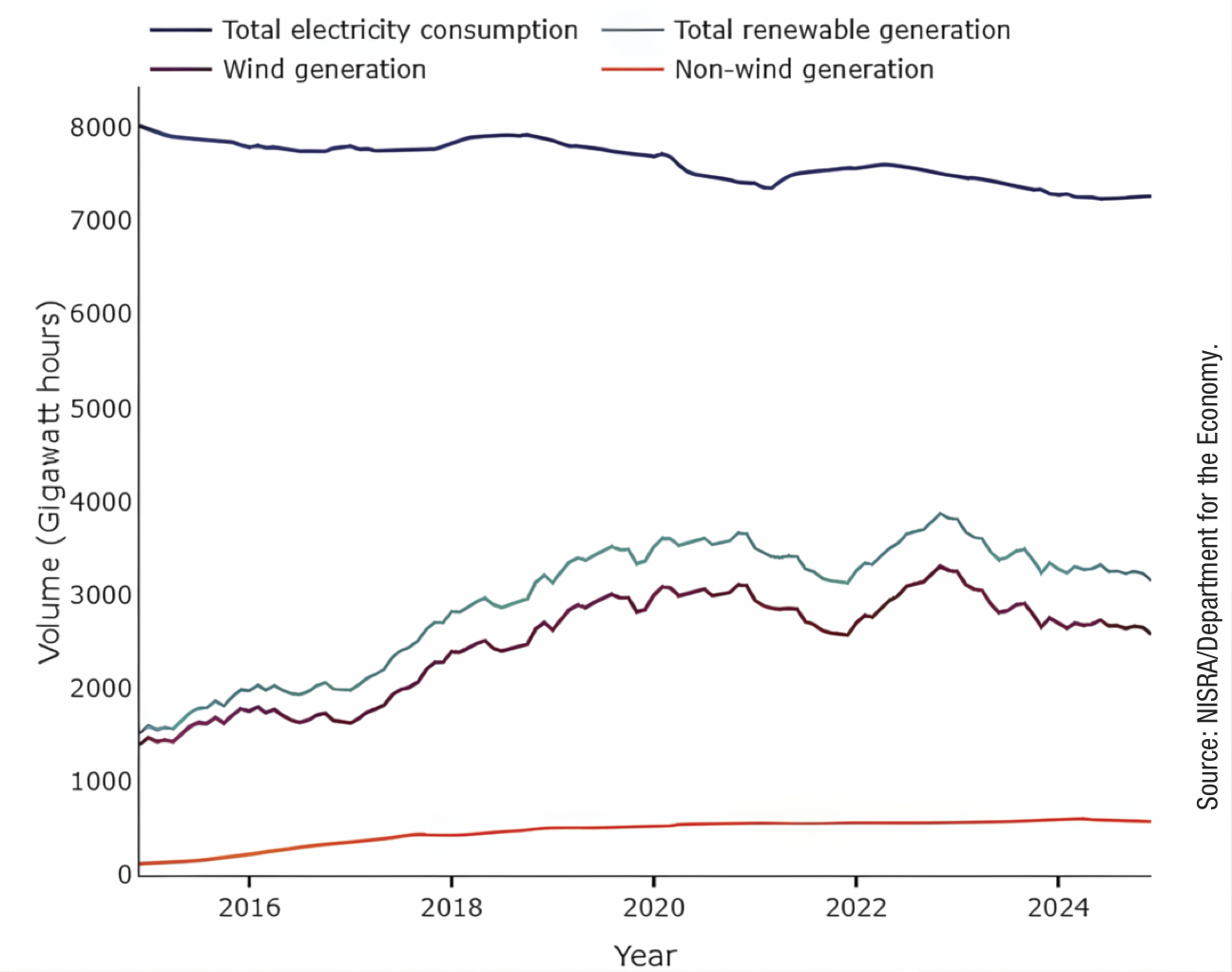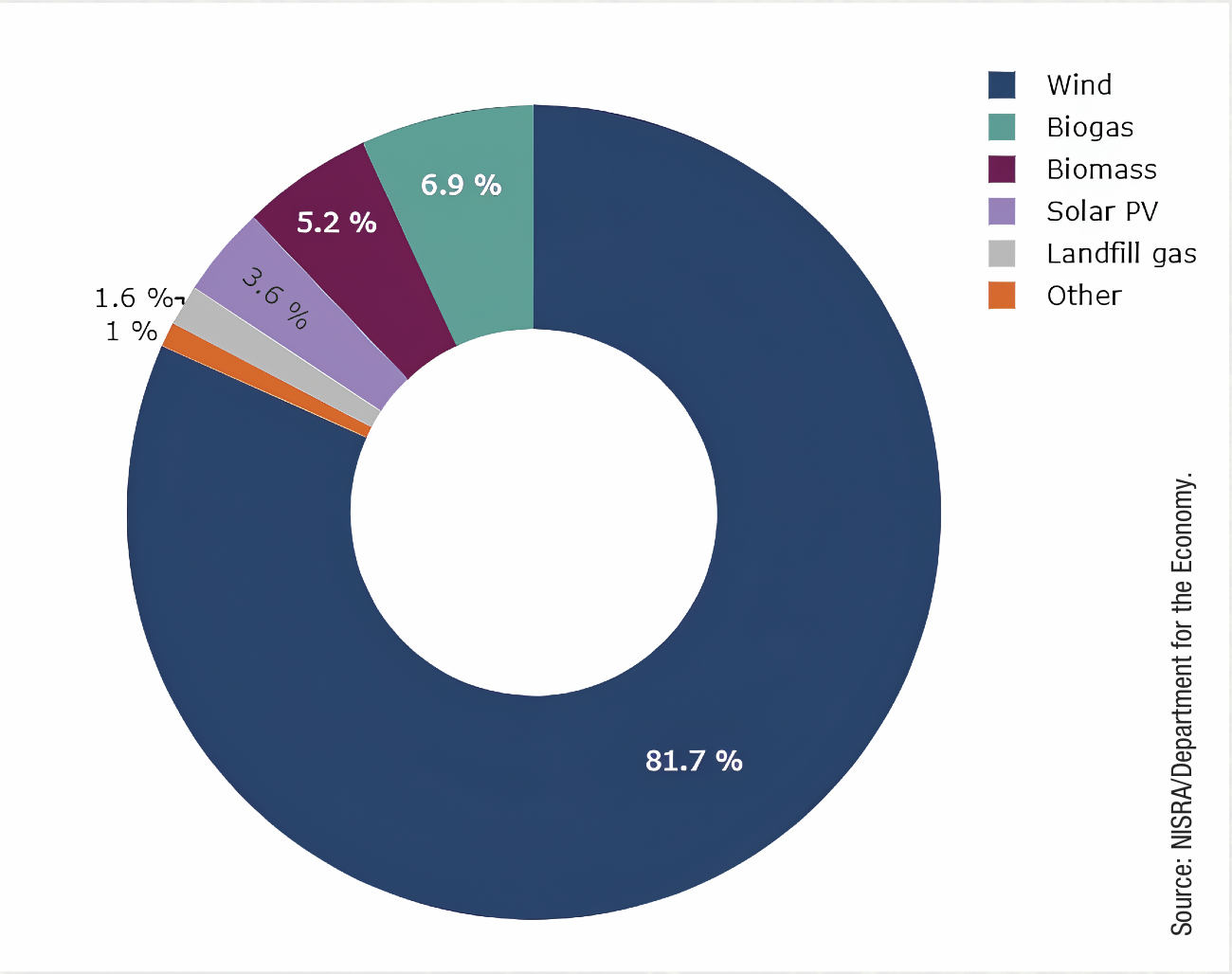
Lessons from Iberia
27th May 2025
Celebrating 20 years of growth and promoting the move to a greener future for Northern Ireland
27th May 2025Renewable electricity generation in Northern Ireland 2024: Second successive decrease
In March 2025, the most recent figures on Electricity Consumption and Renewable Generation in Northern Ireland – covering the calendar year from January to December 2024 – were published by NISRA statisticians within the Department for the Economy’s Analytical Services Unit.
Under the Climate Act (Northern Ireland) 2022, the Executive has a legal obligation to deliver at least 80 per cent renewable electricity generation by 2030.
However, for a second consecutive year, the total renewable electricity generated has fallen from a peak of 51 per cent in 2022 to 45.8 per cent in 2023 and 43.5 per cent in 2024.
There are two main factors at play:
- the intermittence of renewable energy sources; and
- the dispatch down of wind turbines and curtailment of solar PV.
Responding to this “dramatic reduction in renewable electricity generation in 2024”, RenewableNI Director Steven Agnew observed: “With wind being our main source of clean energy – 82 per cent, we can expect weather related variations. However, there is an enduring issue behind the recent trend. We are turning off renewable generation more often due to a lack of grid capacity, in a process known as ‘dispatch down’.
“In levels never before seen, dispatch down averaged 30 per cent in 2024, double what could have reasonably been expected. This was largely driven by increased levels of imports from Scotland across the Moyle Interconnector.”
Suggestions to reverse the downward tend in renewable generation include:
- constructing the second North South Interconnector;
- accelerating the roll-out of long duration energy storage; and
- delivering of the Department for the Economy’s proposed renewable energy support scheme, inverting from a net importer of energy to a net exporter (in alignment with the Programme for Government 2024-2027 ambition).
Key findings for the calendar year from January to December 2024:
• 43.5 per cent of total metered electricity consumption in Northern Ireland was generated from metered indigenous renewable sources, a reduction of 2.3 percentage points when compared with the equivalent calendar year in 2023.
Figure 1: Rolling 12-month average of indigenous renewable electricity generation as a proportion of electricity consumption in Northern Ireland, December 2014 to December 2024 (%)
• A total of 7,272 GWh of electricity was consumed compared with 3,162 GWh of electricity generated from indigenous renewable sources.
Figure 2: Rolling 12-month volumes of total electricity consumption and total indigenous renewable electricity generation, December 2014 to December 2024
(GWh)• 81.7 per cent of all renewable electricity was generated from onshore wind, representing a decrease of 0.7 percentage points in 2023.
Figure 3: Total renewable electricity generation by generation type, January 2024 to December 2024 (%)



